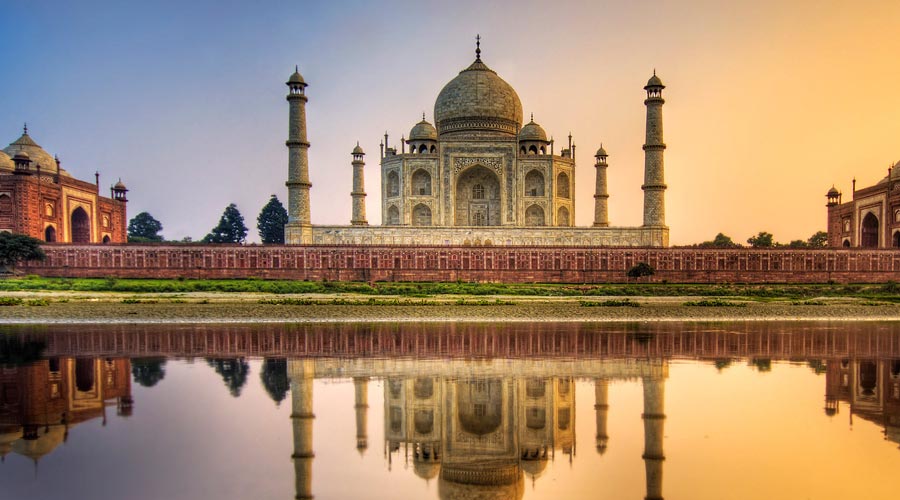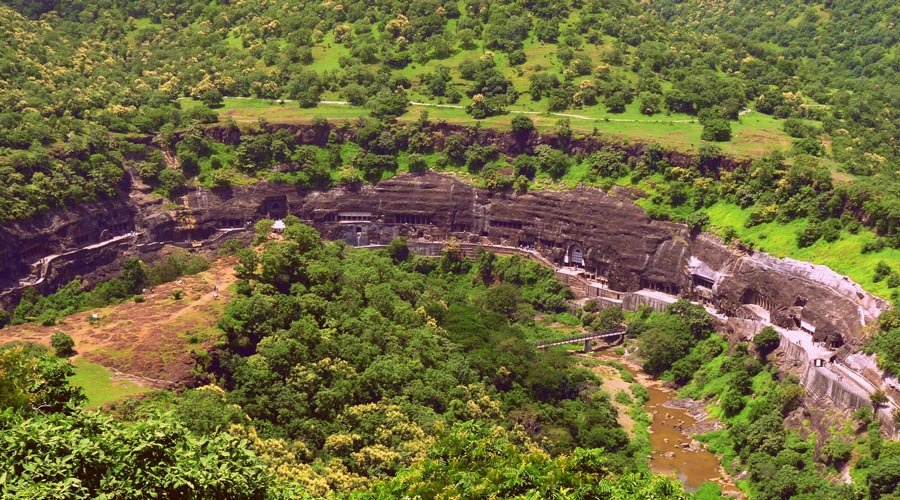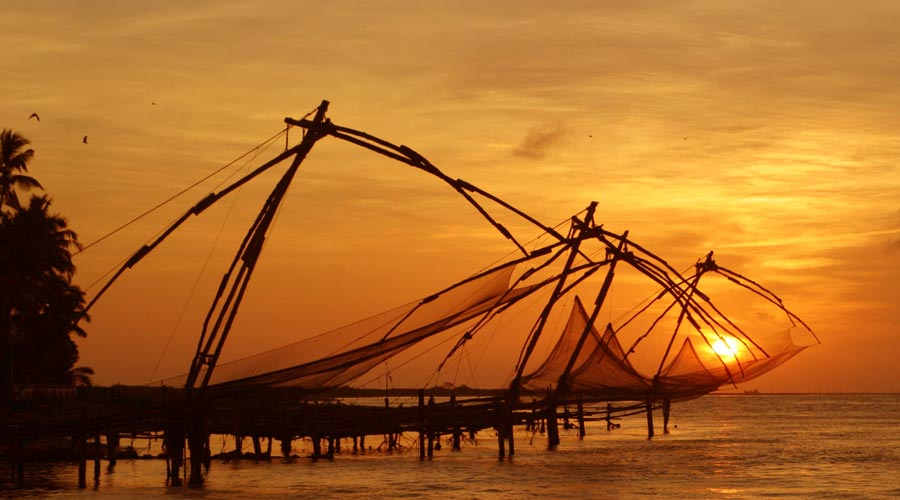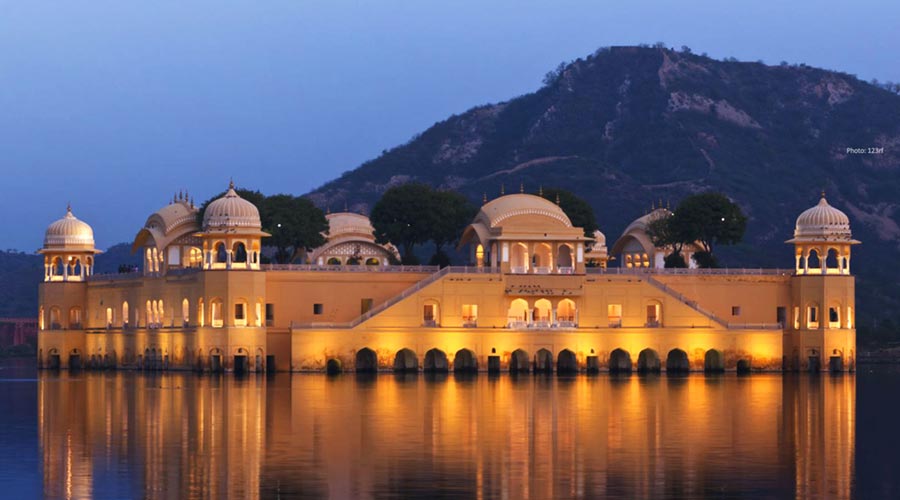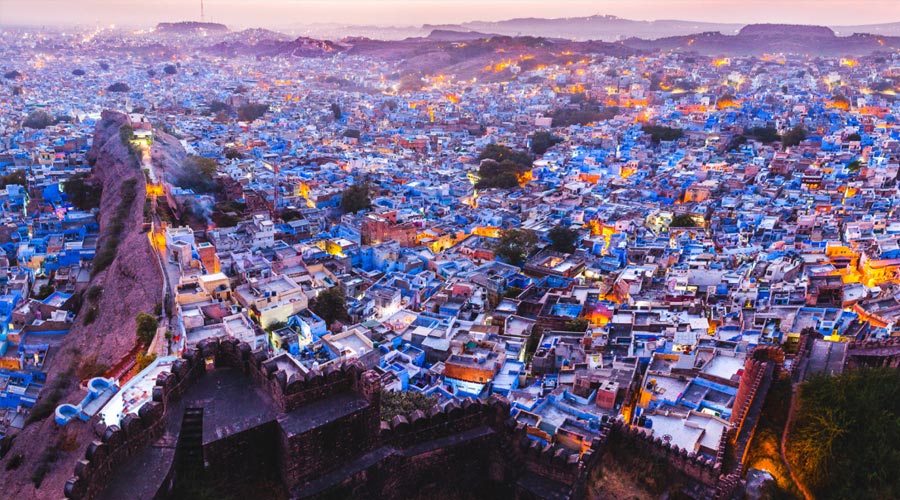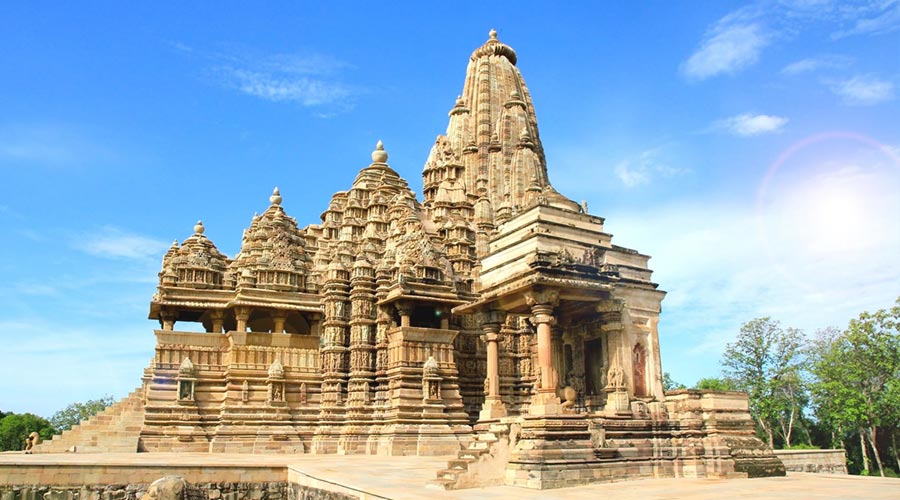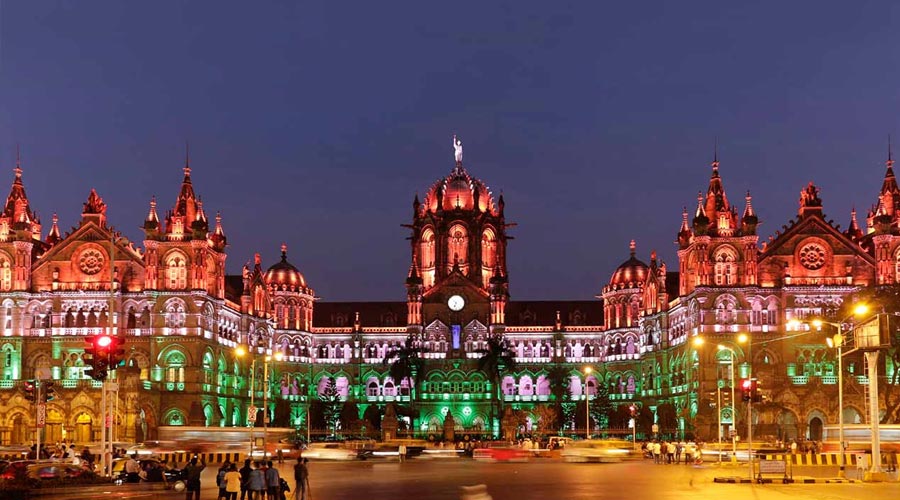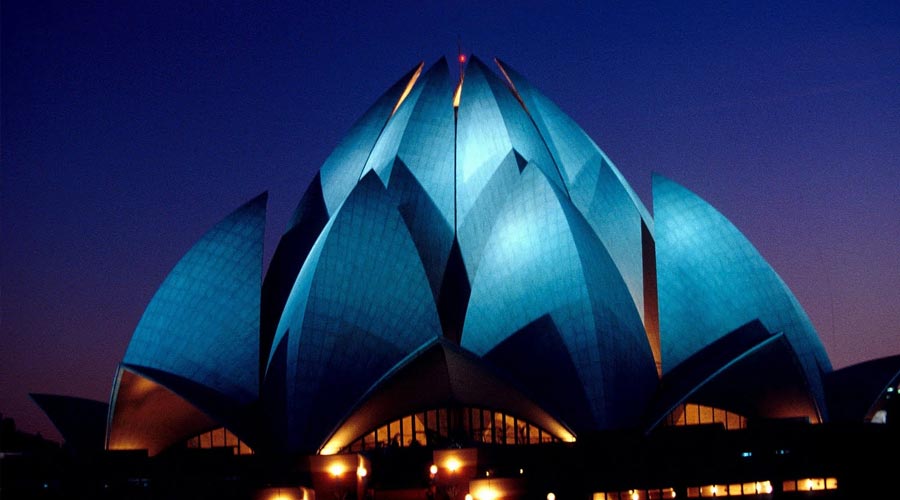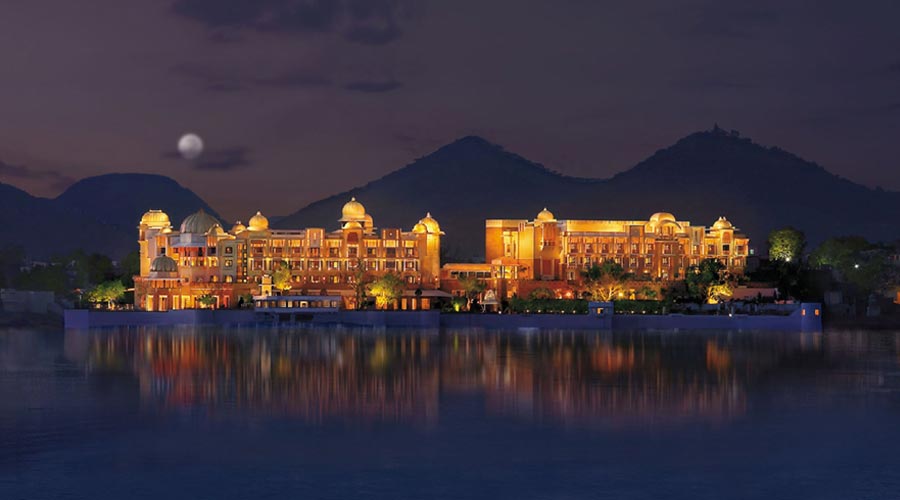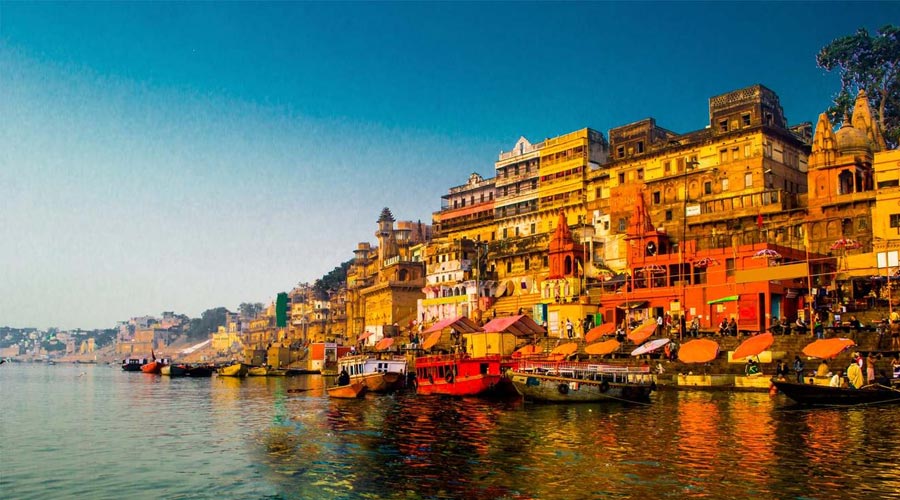Destinations: Delhi- Varanasi-Khajuraho-Agra-Jaipur- Jodhpur- Udaipur- Aurangabad-Mumbai-Cochin.
ITINERARY
Day 1: Delhi
Arrive Delhi. Our Representative will meet and assist you. Check in at the Hotel. Delhi,the capital of kingdoms and empires is now a sprawling metropolis with a fascinating blend of the past and the present. Delhi is a perfect introduction to the composite culture of an ancient land .
Rest of the day will be at leisure. Evening enjoy the visit to Nizamuddin Dargah and listen to Sufi Music. (Only on Thursdays). It is a pilgrimage site for Sufi devotees from around the world. It is also rich with relics. Visit a baoli (Stepwell) or the tomb of the revered Urdu poet Mirza Ghalib. The main shrine of Nizamuddin Auliya is also flanked by Jamaat Khana mosque, which is said to be the oldest building in Nizamuddin. Overnight at Hotel.
Day 02 : Delhi
After breakfast start with the sightseeing of Old Delhi. The tour will begin with a visit to Raj Ghat, a memorial to Mahatma Gandhi,
enjoy the tour of Red Fort which has been restored largely in the last few years. The magnificent Red Fort, overlooking the river Jamuna was built during the years 1638 – 48 when the Moghul Empire was at its peak. Jama Masjid, one of Asia’s largest mosques. People stream in and out of the mosque continuously and the presence of a nearby bazaar means that the area is rarely quiet.
Visit the Gandhi Samadhi where the great leader is remembered by his country.
Later drive to New Delhi, which reflects the legacy the British left behind. The division between New and Old Delhi is the division between the capitals of the British and the Mughals respectively.
The tour will include the Qutub Minar, the tallest stone tower in India and the Humayun’s Tomb which is one of the great monument of Delhi. There is a saying that this monument was the inspiration for the Taj Mahal. Visit the Lotus Temple of the Bahai sect which represents the modern architecture of India.
Drive past the imposing India Gate, the Parliament building and the Rastrapathi Bhawan, the President’s residence. Overnight at Hotel.
Day 03: Delhi
Morning proceed for Akshardham temple.
Swaminarayan Akshardham temple in New Delhi epitomises 10,000 years of Indian culture in all its breathtaking grandeur, beauty, wisdom and bliss. It is one of the newest and most intriguing piece of architecture in India and you would really enjoy the tour. later explore the market.
Evening enjoy dinner at a local restaurant. Overnight at Hotel.
Day 04 : Delhi- Varanasi
Morning after breakfast, Proceed to the airport for flight to Varanasi.
Varanasi is probably one of the most ancient living cities in India. From time immemorial it has been a great religious center for Hindus and one of their most sacred places of pilgrimage. To every visitor Varanasi offers a breathtaking experience. -The rays of the dawn shimmering across the Ganges, the high-banks, the temples and shrines along the banks bathed in a golden hue …soul stirring hymns and mantras along with the fragrance of incense filling the air…and the refreshing dip in the holy water gently splashing at the Ghats.
Afternoon visit Sarnath, One of the holiest Buddhist site in the world, where Buddha preached his first Sermon in 590 BC. Here he revealed the eight fold path that leads to the attainment of inner peace, Enlightenment and Ultimate Nirvana. Witness the ruins of a once flourishing Buddhist monastery and visit a fine Museum which houses an excellent collection of Buddhist art and sculptures .
In the evening visit the Ghats for the evening ceremony. Overnight at Hotel.
Day 05: Varanasi
Morning drive to Daswamedh Ghat and take a boat ride on the sacred river, witness the living traditions of one of the world’s oldest and most important religions. Thousands of faithful come daily to the banks to bathe and pray while in the background, temples and palaces rise in tiers from the water’s edge. Then return for a walk through the cobblestone streets along the banks of Ganga. As shops open, the place becomes a beehive of activity. Visit the Kashi Vishwanath Temple while returning to the hotel.
After breakfast, proceed for a day tour of Varanasi.
Visit Bharat Mata Temple, which features a big relief map of Mother India engraved in marble. The 18th century Durga Temple, commonly known as the Monkey Temple due to the huge population of the monkeys.
Proceed to the Tulsi manas Temple, crafted from white marble which features the entire Ramayana inscribed on its walls.
Also visit the Banaras Hindu University considered as the biggest residential university in Asia. The University Campus houses an Art Gallery and the Mosque of Mughal Emperor Aurangzeb. Overnight at Hotel.
Day 06: Varanasi-Khajuraho
Morning after a leisure breakfast, transfer to airport to board the flight to Khajuraho .Reach and check in to the hotel.
Situated in the northern most part of Madhya Pradesh, Khajuraho is famous for its enchanting temples. These temples have been designed and carved to lead the eyes from ground level upward till you seem to be looking at heaven.
After lunch visit the world famous temples .These temples are the most exquisite specimen of Hindu architecture and sculpture in medieval India. Though sculptures are the main attraction to common visitor. The architectural style of the Khajuraho temples is very different from the temple prototype of that period. Visit the temples of Khajuraho , divided into three geographical groups: Western, Eastern and Southern. In the evening enjoy the Sound & Light Show at the temple complex. Overnight at Hotel.
Day 07: Khajuraho-Jhansi
Morning drive to Jhansi enroute visit Orchha.
Orchha is a medieval city founded by the Bundela rulers with palaces and temples of the 16th & 17th century, which has remarkably withstood the onslaught of time. The town is known for its Chattaris which were built in the memory of the kings and the place is flanked by the river Betwa.
Enjoy your lunch at Orchha. Proceed for sightseeing of sites within the Fort Complex.
Drive to Jhansi and board the deluxe train for Agra. Reach Agra by evening.
Two great Mughal monarchs, Akbar and Shah Jahan, transformed the little village of Agra into a befitting second capital of the Mughal Empire. Today a visitor to Agra is caught up in a world of contrasting edifices, of red sandstone and white marble, narrow galleys and quaint buggies, and that irresistible charm that this favorite city of the Mughals still retains. It is not surprising, that modern Agra still reflects its Mughal heritage most conspicuously. A walk down the narrow bustling streets of the city will introduce the visitor to the wafting aroma of Mughlai cuisine. Overnight at Hotel.
Day 08: Agra
Early morning visit Taj Mahal, symbol of eternal love, which stands on the banks of River Yamuna. It was built by the 5th Mughal emperor, Shah Jehan in the year 1631 in memory of his wife, Mumtaz Mahal. Taj is at its most alluring in the relative quiet of early morning, shrouded in mists and bathed with a soft red glow. As its vast marble surfaces fall into shadow or reflect the sun, its colour changes, from soft grey and yellow to pearly cream and dazzling white; it’s well worth visiting at different times.
Return to the hotel for a leisure breakfast.
Proceed for the sightseeing tour of Agra. Visit Sikandra, the beautifully maintained monument where Emperor Akbar was buried.
Agra Fort built by the Mughal emperor Akbar in 1565 AD, the fort is predominantly of red sandstone. Ensconced within is the picture perfect Pearl Mosque, which is a major tourist attraction. It lies on the bend of the river Yamuna, almost in the heart of the town.
Baby Taj or the Itmad-Ud-Ullah, The interiors of which are considered better than the Taj. It is one of the most beautiful Mughal tombs and was built by Nur Jahan, the Empress of Jahangir for her father in 1628. With its tranquil, small garden on the bank of Yamuna River, the tomb stands impressively elegant from a distance.
Evening at Mehtab Bagh to experience the Sunset. The Garden complex, situated on the opposite bank of the Taj Mahal, is known as Mehtab Bagh, or The Moonlight Garden. Overnight at Hotel.
Day 09: Agra-Jaipur
Morning after a leisure breakfast, drive to Jaipur, enroute visit Fatehpur Sikri.
Akbar, who was without a male heir heard about Saint Salim Chisti and visited him in the year 1568. The saint blessed him with 3 sons and in gratitude Akbar ordered the great mosque of Fatehpur Sikri built under his supervision. As a mark of respect to the saint, Akbar shifted his capital to Fatehpur Sikri and built various secular buildings. Continue drive to Jaipur.
Reach Jaipur and check in to the hotel. Overnight at Hotel
Jaipur is the capital of Rajasthan a romantic realm of resplendent palaces, mighty fortresses that lies in the western deserts and is an utterly unique part of India. Jaipur takes its name from its venerated founder Jai Singh II, who was given the title Sawai Maharaja by the Mughal. Jaipur is known as the Pink City on account of the distinctive color of its buildings. This did not, however, form part of the original plan, but dates back to 1856, when the city was given a wash of pink in honor of a State Visit from Prince Albert.
Day 10: Jaipur
Morning after breakfast, begin the sight seeing tour . Visit Amber Fort. Its construction was started by Man Singh I in 1592, and completed by his descendent Jai Singh I. Its forbidding exterior belies an inner paradise where a beautiful fusion of Mughal and Hindu styles finds its ultimate expression. Elephant rides or a hired jeep can take one up to the towering heights of Amber fort.
City Palace a delightful blend of Mughal and traditional Rajasthan architecture, sprawls over one-seventh of the area in the walled city. It houses the Chandra Mahal, Shri Govind Dev Temple and the City Palace Museum.
Jantar Mantar the largest and the best preserved of the five observatories built by Jai Singh II in different parts of the country. This observatory consist of outsized astronomical instruments which is still in use.
Hawa Mahal the ornamental facade of this “Palace of Winds” is a prominent landmark in Jaipur. It is a five-storey structure of sandstone plastered pink encrusted with fine work and elaborate balconies.Built in 1799 by Pratap Singh, the Mahal was a royal grandstand for the palace women.
This evening, visit the Birla Temple to know more about the fascinating religious life of Jaipur. Your visit will coincide with the Aarti Ceremony, which involves oil lamps being lit and waved, in order to awake and invoke the deity.
Later visit Choki Dhani and experience a true flavour of Rajasthani culture,with a folk dance performance by local tribal artistes. A sumptuous Indian dinner will mark the perfect end to a great day. Overnight at Hotel.
Day 11: Jaipur-Jodhpur
Drive to Jodhpur enroute visit Pushkar.
Pushkar is one of the holiest place according to Hindus. It is considered that Lord Brahma (the Creator) and his wife Saraswati (the godess of learning and music) performed a ritual in the lake. Ajmer is the pious city for the Muslims. Surprisingly both the cities are at distance of 11km from each other. Visit the Durgah built in fond remembrance of Khwaja Muin ud Din Chisti where the Muslim pilgrims from all over India throng during the festival times.
Reach Jodhpur and check in at the Hotel. Set at the edge of the Thar Desert, the imperial city of Jodhpur echoes with tales of antiquity in the emptiness of the desert. Once the capital of the Marwar state, it was founded in 1459 AD by Rao Jodha – chief of the Rathore clan of Rajputs . The massive 15th century AD Mehrangarh Fort looms on the top of a rocky hill, soaring 125 Mts. Above the plains. The city is encompassed by a high wall -10 km long with 8 gates and innumerable bastions. Overnight at Hotel.
Day 12: Jodhpur
Jodhpur is the second largest city after Jaipur in Rajasthan. The Suryavanshi Rao Jodha founded Jodhpur, the erstwhile capital of Marwar. In medieval times, it was a major trade centre . Even today, it continues to be known for its textiles and crafts. One can feel the medieval flavor and ambience that forms a part of the culture of the city. It is one of the aristocratic and majestic place of India. Pale blue is the shade of the city as suggested by its palaces, havelis, temples and houses.
Morning begin the sightseeing tour of Jodhpur, visit the Mehrangarh Fort, rising up a hilly scarp, built on the advice of a hermit, overlooking the city in the image of a long sentinel. Inside the Fort are a number of palaces added by successive rulers. In this palace you would see different miniature paintings & cradle room. Later visit Jaswant Thada Memorial. And Clock Tower market
In the afternoon visit the Bishnoi Village and be a part of the local life. Experience the free natural habitat of many wild animals. Overnight at Hotel .
Day 13: Jodhpur-Udaipur
Drive to Udaipur, enroute visit the historical temples of Ranakpur .
The Ranakpur Temples, dates back to the 15th century. It has 200 pillars, none of which are alike and support its 29 halls. The Temple abounds with intricate friezes and sculptures. Visit two more Jain temples and the Temple of the Sun God with its erotic sculptures.
Enjoy a hot lunch in a nice village restaurant and continue drive to Udaipur. Reach Udaipur and check in at hotel.
The city of Dawn, Udaipur is a lovely land around the azure lake, hemmed in by the lush hills of the Aravallis. A vision in white drenched in romance and beauty, Udaipur is a fascinating blend of sights, sound and experiences and inspiration for the imagination of poets, painters and writers. Its a kaleidoscope of fairy-tale palaces, lakes, temples, gardens and narrow lanes strewn with stalls, carry the flavor of a heroic past, epitomizing valor and chivalry. Their reflection in the placid waters of the Lake Pichola is an enticing sight. Udaipur is the jewel of MEWAR -a kingdom ruled by the Sisodia dynasty for 1200 Years. Overnight stay at Hotel..
Day 14: Udaipur
Morning proceed for sightseeing tour of Udaipur. Visit City Palace, Standing on the east bank of Lake Pichola, is a massive series of palaces built at different times from 1559 A.D. The balconies of the palace provide panoramic view of Jag Niwas, Jag Mandir on one side and on the other the city of Udaipur. Now the palace contains many antique articles, paintings, decorative furniture and utensils and attracts thousands of visitors every day.
Saheliyon ki Bari was built by Maharana Sangram Singh in the mid-18th century. The garden of the maidens brings to mind the lifestyle of the ladies of the court. The delightful garden appear discreet and in impeccable taste.
Bagore ki Haveli is a very congenial old building built right on the waterfront of Lake Pichola at Gangori Ghat. It came to be occupied by Maharana Shakti Singh of Bagore who built the palace of the three arches and acquired its name of Bagore-ki-haveli, the house of Bagore.
Jagdish Temple is situated in the middle of the city. The temple of Jagannath Rai, now called Jagdish-ji, is a major monument and should be seen carefully. It was built by Maharana Jagat Singh Ist in 1651 A.D.
Proceed for Evening Motor cruise on the placid waters of Lake Pichola. From the boat you will be able to view the city of Udaipur as it rises majestically above the lake in the middle of the Rajasthan desert. Also visit the Jag Mandir Palace – the other island palace in the middle of the lake. Spend some time at the Jag Mandir Palace. Overnight at Hotel.
Proceed for Evening Motor launch cruise on the placid waters of Lake Pichola. From the boat you will be able to view the city of Udaipur as it rises majestically above the lake in the middle of the Rajasthan desert. Also visit the Jag Mandir Palace – the other island palace in the middle of the lake. Overnight at Hotel.
Day 15: Udaipur- Mumbai
Morning after breakfast, transfer to the airport for flight to Mumbai. Reach and check into the hotel close to the airport.
Day at leisure/if desire can visit the Film City which is famous for the Hindi Movies Shootings. Evening transfer to airport to board the flight to Aurangabad. Reach and check into the hotel.
Aurangabad district has always been a prominent region on the Deccan plateau. Having been inhabited since the Stone Age, it has a long artistic and cultural history to which several dynasties have made major contributions over the years. Maurya rule marked the arrival of Buddhism in Maharashtra. To scholars and lovers of art and culture the city is more familiar as the gateway to the ancient caves of Ajanta and Ellora, both famous as treasure houses of Indian Art and Sculpture. Overnight at Hotel.
Day 16 Aurangabad
Morning after breakfast, Proceed for a full day sightseeing with excursion to Ajanta ,Elloa Caves.
Ellora Caves are the rock-hewn temples and monasteries of Ellora that lie just 30 km away from Aurangabad city. In all, there are 34 cave temples dedicated to Lord Shiva. Kailas Temple, the central attraction at Ellora, is the most remarkable. Chiseled by hand from a single massive rock, it includes a gateway, pavilion, courtyard, vestibule, sanctum, sanctorum and tower which bear testimony to the excellence of Dravidian art.
Ajanta caves are nestling in an inner fold of the Sahyardi hills, 100 km from Aurangabad. The 30 rock-hewn caves of Ajanta are in the shape of a mammoth horse- shoe . The Caves date from the 2nd century BC. carved with little more than a hammer and chisel. The exquisite wall and ceiling paintings, panels and sculptures of Buddha’s life are famous throughout the world as the earliest and finest examples of Buddhist pictorial art. Return to Aurangabad and visit the Daulatabad Fort.
Daulatabad Fort, was once known as Devgiri. this magnificent 12th century fortress stands on a hill just 13 km. from Aurangabad. It was given the name Daulatabad, the city of fortune, by Muhammad Tughlaq, Sultan of Delhi. One of the world’s best preserved fort of medieval times, surviving virtually unaltered. Overnight at Hotel.
Day 17 Aurangabad – Mumbai: (By Flight)
Morning after breakfast . Transfer to airport for the flight to Mumbai.
Mumbai is a confluence of varied cultural currents that have given Mumbai a unique position of the most multi-ethnic city of India. The capital city of Maharashtra State formerly known as Bombay lies in the southwestern part of India and occupies a peninsular site originally composed of seven islets lying off the Konkan Coast of western India. Mumbai is also country’s financial and commercial hub and has a principal port on the Arabian Sea.
Reach and check in at hotel. Overnight at Hotel.
Day 18: Mumbai
Morning after breakfast. Proceed for a city tour of Mumbai .
Mumbai Fort is the area north of Colaba, since the old British fort was once located here. There are lot of impressive buildings from Mumbai’s golden period . St. John’s church, dedicated to the soldiers, who laid down their lives in the Sindh campaign of 1838, and the first Afghan war of 1843, is also worth a visit.
Marine Drive is located in the central Mumbai, built in the 1920s and 30s on land reclaimed from the sea. It is Mumbai’s most famous thoroughfare and is also referred to as the Queen’s Necklace because of the dramatic line of street lamps lit up at night.
Gateway of India is Mumbai’s principal landmark, and is a huge archway on the water’s edge at Apollo Bunder.
Chowpatty beach situated at the end of Marine Drive has a moderate expanse of sand and is the only beach in the central part of Mumbai. One can witnesses many Hindu religious ceremonies taking place.
Mumbai High court is an attractive building in early English Gothic style, situated next to the Oval Ground is well worth a visit for its impressive architecture. Statues representing Justice and Mercy surmount the Central structure.
Rajabai Clock tower, situated at the gardens of the Bombay University building rises above the portion of the library section. Consisting of five elaborately decorated story,the tower. The top of the cupola is ornamented with sixteen statues depicting various Indian castes. In the evening enjoy the beach close to the hotel. Overnight at Hotel
Day 19: Mumbai – Cochin
Morning transfer to airport to board the flight for Cochin. Arrive Cochin. Our representative will assist and transfer to the hotel.
Kochi became the first European town-ship in India, when the Portuguese settled here in the 15th century .
The Dutch wrested Fort Kochi from the Portuguese in AD 1663 and later in the last phase of the colonial saga, the British took over, the town in 1795. During 1660’s,Fort Kochi peaked in stature as a prime commercial centre and its fame spread far and wide, variously as a rich trade centre, a major military base, a vibrant cultural hub, a great ship building centre, a centre for Christianity and so on. Today, centuries later, the city is home to nearly thirteen communities.
Evening proceed for a private harbor cruise and admire the sunset. Return to the hotel and relish seafood dinner. Overnight will be at Cochin.
Day 20: Cochin
Morning after breakfast visit Vasco da Gama Square/Chinese Fishing Nets .The huge cantilevered fishing nets are the legacy of one of the first visitors to the Malabar Coast. these nets are set up on teak wood and bamboo poles. The best place to watch the nets being lowered into the backwater and the catch being brought in.
Synagogue and Jew Town was Constructed in 1568, this is the oldest synagogue. Destroyed in a shelling during the Portuguese raid in 1662, it was rebuilt two years later by the Dutch. The area around the Synagogue is a centre of spice trade and curio shops
Santa Cruz Basilica is the historic church built by the Portuguese and elevated to a Cathedral by Pope Paul IV in 1558. In 1795 it fell into the hands of the British when they took over Kochi, and was demolished. The church was proclaimed a Basilica in 1984 by Pope John Paul II.
St. Francis Church was built in 1503 by Portuguese Franciscan friars, this is India’s oldest European church. Vasco da Gama was buried here in 1524 before his remains were moved to Lisbon, Portugal. The tombstone still remains.
VOC Gate is the large wooden gate facing the Parade Ground, with the monogram (VOC) of the once mighty Dutch East India Company carved on it, was built in 1740.
Bastion Bungalow is built in the Indo-European style way back in 1667, the bungalow gets its name from its location on the site of the Stromberg Bastion of the old Dutch Fort. Though it has been said that a network of secret tunnels runs beneath the bungalow, none have been found.
In the evening enjoy the Kathakali Dance Presentation. Overnight at Hotel.
Day21: Cochin
Morning excursion to the magical backwaters.
Board the houseboat. The journey will start from Aleppey also known as Alappuzha which is known as the Venice of the East. It was here that traders from across the seven seas came in search of black gold and souvenirs.
As the boat glides silently forward through the largest vast expanse backwater body, you will drift into a world of peace and serenity. At this point, mouth watering local cuisine will be served.
After a short siesta be prepared for the most fascinating journey through the panoramic view of the paddy fields admiring duck farming, watching divers diving for mussels via Mangalam, Chithira, R-block and C block with a cup of steaming tea/coffee .
On the way stop at the St. Mary’s Church at Champakulam . One of the oldest churches in Kerala, the St. Mary’s church is believed to be one of the seven established by St Thomas.
The 130 feet long snake racing boat can be seen here as they originally belong to this place.
Drive back to Cochin. Overnight at Hotel.
Day22: Cochin -Delhi
Morning after breakfast , relax at the hotel take a Ayurvedic massage. Transfer to airport for flight to Delhi. Reach Delhi and proceeding to the international airport in time for the flight back home with sweet memories of India.

